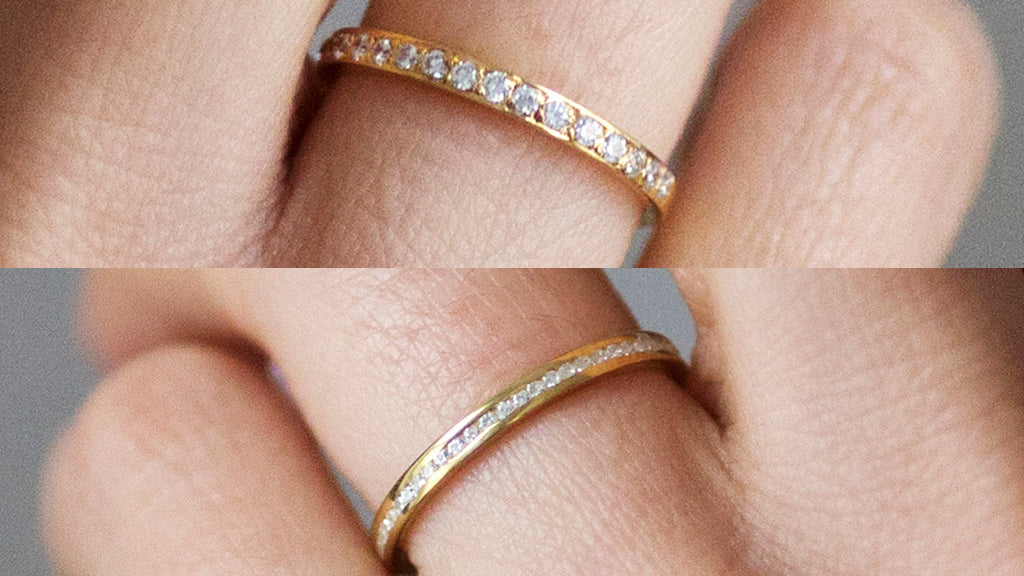Your Cart is Empty
But, once you dive into this new world of forever rings, you might find that there are more options available to you than you anticipated. In particular, the domain of diamond settings is one that often proves confusing to novice jewellery shoppers. This blog post is here to explain the difference between two of the most common styles of band decoration; grain-setting and channel-setting.

A diamond or gemstone can be secured in a ring in a variety of different ways. The setting can make a huge difference to the overall appearance of the ring, its day-to-day practicality, and the extent to which a stone is enhanced.
Whilst there is a plethora of settings available, two of the most popular band settings are the grain setting (or pavé setting) and the channel setting. To the naked, untrained eye, these approaches are remarkably similar; both concerned with holding small stones in the band shaft. So, how do you tell them apart? And, most importantly, which is better for you?
 Our grain-set Cherish eternity ring
Our grain-set Cherish eternity ring
Grain setting is an intricate technique by which gems are secured in a ring with the help of tiny prongs, or ‘beads’. These beads are barely visible and hold the stones extremely close to one another, ensuring that no visible gaps are left between each. The result is solid and consistent, creating an encrusted and highly sparkly appearance overall. An example of a grain-set band is our glittery Cherish ring.
Pros? The twinkle achieved by the grain setting is impressive, making it ideal for those who like their jewellery to say “Bling!”
Cons? Grain-set bands boast many nooks and crannies, making them susceptible to build-ups of dirt and grime. Regular check-ups will keep a grain-set ring looking fresh-faced and sparkly.
 Our channel-set Promise ring
Our channel-set Promise ringThe channel setting does what it says on the tin; it’s a technique by which gems are embedded in a groove in the band, held in place by one another and the channel walls either side. Contemporary, streamlined and often understated, this is a popular method for rings that are stacked, like those in wedding sets. An example of a channel-set band is our sleek Promise ring.
Pros? Channel settings are sturdy, unobtrusive and suitable for an active lifestyle; there’s no risk of snagging here!
Cons? Due to the exact alignment of the stones in a channel setting, it can be tricky to resize a band with gems channel-set all the way around.

Of course, any piece of jewellery adorned with a continuous row of rare and precious gemstones is likely to bear a bigger price tag than a plain design.
Nevertheless, some jewellers pitch channel-setting as a cheaper option than other setting styles on account of industrial manufacturing techniques allowing numerous diamonds to be set at once. There is also the argument that the enclosed nature of the channel-setting is more accommodating of low-quality diamonds.
However, we at Lebrusan Studio price all of our diamond-set wedding bands based primarily on the laborious work of our experienced Hatton Garden hand-setter, Michael. What's more, we never compromise on diamond quality.
For more information on the settings available for centre-stones, check out our other blog: What’s the Best Diamond Setting for an Engagement Ring?
